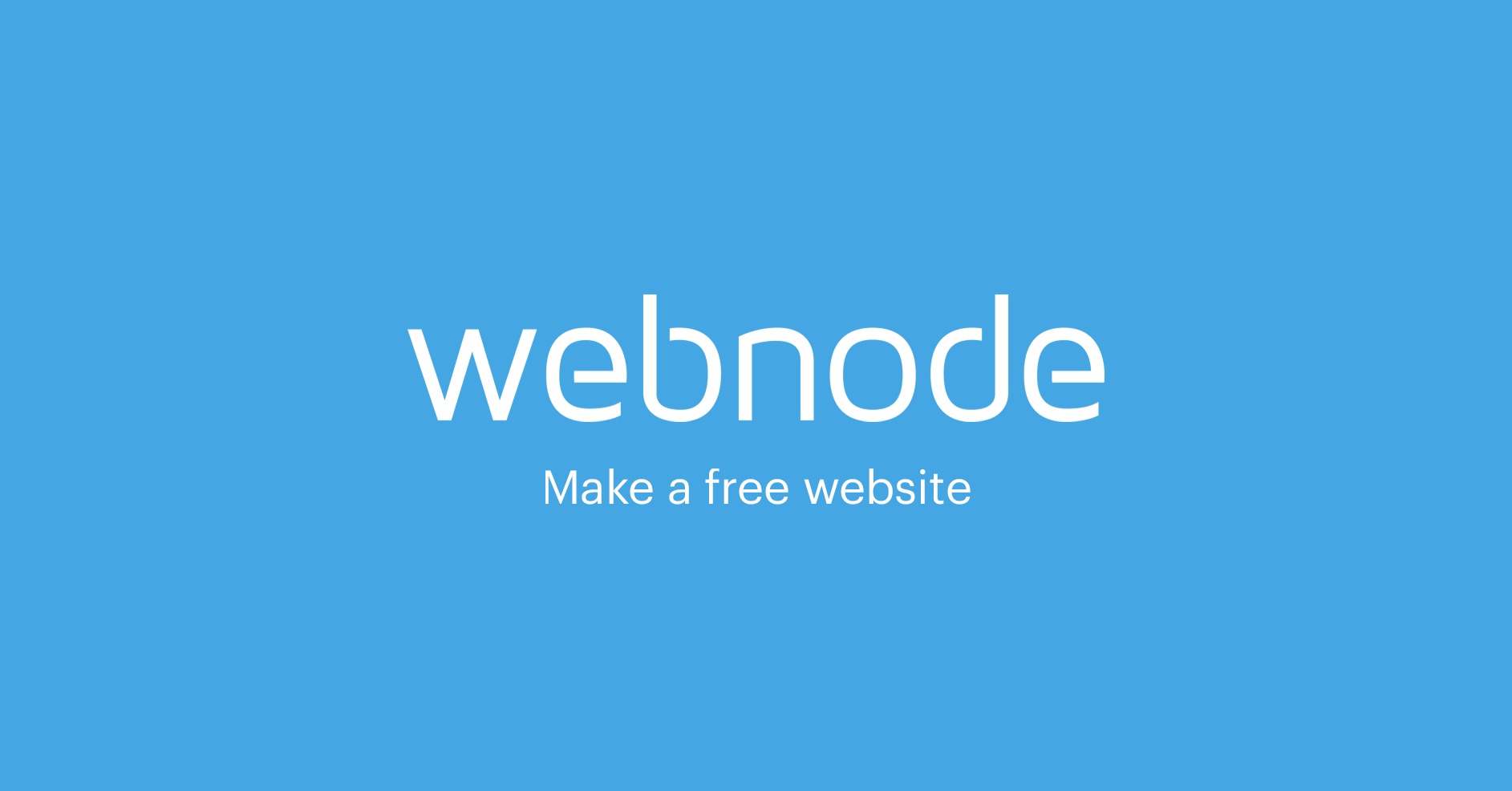Introduction
Having an online presence is essential for businesses of all sizes in today’s digital world. Website builders make it easy for anyone to create professional, responsive websites without needing advanced technical or design skills. This guide reviews the leading website builder platforms and highlights their key strengths to help you determine the best option.
Methods of Evaluation
To evaluate the top website builders, we considered factors like pricing and plans, ease of use of the interface, customization options, performance and speed, security features, support availability, and integrations with tools like shopping carts and CRMs. We also looked at quantitative metrics like number of templates, domains hosted, user reviews, backlinks, traffic and keyword search volume to assess popularity and market presence for each platform.
1. WordPress.org
WordPress is a free and open-source content management system (CMS) that can be used to easily create blogs, portfolios, ecommerce websites and more. Developed by the nonprofit WordPress Foundation, WordPress is used by over 60 million websites globally and powers 35% of websites on the internet today according to W3Techs. Some of the top brands that use WordPress include CNN, Sony, USA Today, Toyota and Uber.
Pros: Some key advantages of using WordPress include:
– Free and open-source CMS with no licensing fees
– Huge library of over 100,000 free themes and 55,000+ plugins
– Widely used CMS so it has a large community and support
– Easy to learn and use interface for both technical and non-technical users
Cons: One potential downside of WordPress is that free hosting platforms may not have the resources to handle high traffic websites. As traffic and functionality grows, it may be necessary to upgrade to premium hosting.
Pricing: WordPress itself is free and open source. To host a WordPress site, basic hosting starts at around $5-10 per month. For more advanced features, managed WordPress hosting starts at around $15-30 per month which includes increased resources, security/backup features, and support.
Some key stats about WordPress include:
– Over 60 million websites use WordPress globally
– Runs 35% of all websites according to W3Techs
– Over 100,000 free themes available on WordPress.org
– Over 55,000 plugins available to extend WordPress functionality
2. WordPress.com
WordPress.com is a website builder and content management system developed by Automattic. WordPress.com allows users to create free websites and blogs without knowing any code. It handles all of the hosting, domain name, and technical backend for the users.
Pros: Some key advantages of WordPress.com include:
– Managed WordPress hosting so users don’t have to configure servers themselves.
– Beginner friendly interface that requires no code knowledge to use.
– Free hosting for basic personal use sites and blogs.
– Wide selection of themes to customize the look and feel of sites.
Cons: A potential disadvantage is limited customization compared to self-hosted WordPress as it uses pre-designed themes and plugins approved by Automattic.
Pricing: WordPress.com offers three main pricing tiers:
– Free Plan: Free hosting for basic personal sites and blogs with up to 5 GB storage and 2 GB bandwidth per month.
– Personal Plan: $4/month for custom domain, extra plugins, ads removed, increased storage and bandwidth.
– Premium Plan: $8/month for all Personal Plan features plus priority support and additional plugins.
Some key stats about WordPress.com include:
– Handles over 30% of all websites globally.
– Has over 240 million monthly visits.
– Powering over 60 million websites.
– Provides free and low-cost plans for basic hosting and functionality.
WP.comBuild a site, sell online, earn with your content, and morewordpress.com
3. Weebly
Weebly is a popular website builder software that allows users to create professional-looking websites, blogs and online stores without any coding knowledge. Founded in 2006, Weebly is headquartered in San Francisco and has helped over 50 million users worldwide launch their online presence.
Pros: Some key advantages of using Weebly include:
– Free basic plan available which is sufficient for basic personal or small business sites
– Intuitive drag-and-drop interface makes site building very simple with no coding required
– Large selection of professional, mobile responsive templates to choose from
– Powerful eCommerce functionality available for selling goods and products online
Cons: One potential disadvantage of Weebly is that on the free plan, your site will contain ads from Weebly, though they are not overly intrusive.
Pricing: Weebly offers 3 pricing tiers – Free, Premium ($4/month billed annually) and Business ($12/month billed annually). The free plan allows basic site building functionality while the paid plans remove ads and unlock more advanced features and storage.
Some key stats about Weebly include:
– Over 50 million websites created on the platform
– Available in 15 different languages
– Mobile responsive templates ensure sites are optimized for all devices
– Integrations with services like Facebook, Instagram and Google to help drive traffic
4. Shopify
Shopify is a leading e-commerce platform for building an online store and selling products. Founded in 2004, Shopify currently powers over 1 million businesses in approximately 175 countries. With Shopify, merchants can create an attractive online store without any technical knowledge and begin selling their products online.
Pros: Some of the main advantages of Shopify include:
– Ideal for online stores as it provides all the core e-commerce functionality out of the box
– Large library of apps available to add additional features and functionality
– Payment processing is included so merchants don’t need to set up separate merchant accounts
– Robust analytics and reporting tools to help merchants optimize their store and track key metrics
Cons: One potential disadvantage is that Shopify plans have monthly or annual fees, so it may not be suitable for very small businesses or stores just starting out on a limited budget.
Pricing: Shopify offers several plan tiers starting from $29 per month for a Basic plan up to $2,000 per month for an Unlimited plan. All plans include the core e-commerce capabilities like inventory management, transaction processing, themes, and sales channels.
Some key stats about Shopify include:
– Over 1 million businesses worldwide using Shopify
– Available in over 100 languages
– Over 3,500 apps available on the Shopify App Store
– Processed over $177 billion in gross merchandise volume in 2021
5. Wix
Wix is a leading website builder platform that allows users to create professional looking websites and online stores without any coding knowledge. Founded in 2006 and headquartered in Tel Aviv, Israel, Wix has over 200 million registered users worldwide.
Pros: Some key advantages of using Wix include:
– Intuitive drag-and-drop interface makes it easy for anyone to build a website
– Large selection of beautifully designed templates to choose from
– Built-in e-commerce functionality allows you to easily sell products and services online
– Strong SEO optimization tools help improve your site’s visibility in search engines
Cons: One potential disadvantage is that customization options may be more limited compared to using other website building platforms or coding your site from scratch.
Pricing: Wix offers a free basic plan as well as premium monthly/annual subscription plans starting from $13/month for the Combo plan which removes ads and includes additional features and storage.
Some key stats about Wix include:
– Over 200 million registered users globally
– Used by over 30 million businesses worldwide
– Nearly half a million new sites are created on Wix every month
6. Squarespace
Squarespace is a popular all-in-one website builder known for its beautiful templates and emphasis on design. Founded in 2004, Squarespace allows anyone to create professional websites or online stores with no coding experience required.
Pros: Key advantages of using Squarespace include:
– Beautiful templates that are easy to customize
– Strong emphasis on visual design and aesthetics
– Robust e-commerce features for selling products online
– Excellent 24/7 customer support
Cons: One potential disadvantage is that advanced customization options require coding knowledge. The drag-and-drop interface is also not as flexible as standalone site building software.
Pricing: Squarespace offers affordable monthly pricing starting from $16 per month for basic functionality. Additional features like e-commerce and advanced customization options are available in higher pricing tiers.
Some key stats about Squarespace include:
– Used by over 1 million sites worldwide
– Over 45 beautifully designed templates to choose from
– Mobile-optimized templates for responsive design
– Robust e-commerce functionality for online stores
7. Jimdo
Jimdo is a website builder software that allows users to create responsive websites and online stores without any coding knowledge. Founded in 2007, Jimdo is one of the most popular website builder platforms with over 60 million websites created on the platform. Jimdo has a free plan as well as paid subscription plans starting from $5 per month.
Pros: Some of the key advantages of Jimdo include: – Free basic plan available to get started without any upfront costs – Intuitive and simple drag-and-drop interface makes it very easy for non-technical users to build professional looking sites – Integrated ecommerce functionality allows users to easily sell products and services with the built-in online store – Active community forums provide great support from other Jimdo users and experts
Cons: One potential disadvantage is that the free plan has limited features and storage. To access all features and functionalities, users will need to upgrade to one of the paid subscription plans starting from $5 per month.
Pricing: Jimdo offers the following pricing plans: – Free Plan: Provides basic features for a single site. Limited storage and functionality. – Plus Plan: $5/month. Removes ads and provides more storage and features. – Pro Plan: $12/month. Adds extra site functionality and storage as well as priority support.
Some key stats about Jimdo include: – Over 60 million websites created on the platform – Available in 39 languages – Hosts over 2 million domains – Offers 24/7 live chat and email support
8. Drupal
Drupal is an open source content management system (CMS) built on PHP and MySQL. First released in 2001, Drupal powers millions of websites and has a strong developer community behind ongoing updates and new features. As an open source project, Drupal is completely free to download and use. It offers an alternative to proprietary CMS like WordPress and allows for high levels of customization.
Pros: Some key advantages of using Drupal include:
– Open source and free to use with no license fees
– Highly customizable via modules and custom code
– Large developer community and regular updates and support
– Robust permissions system allows complex user and content access controls
– Advanced content types beyond basic pages support complex information architecture
Cons: A potential disadvantage of Drupal is its steeper learning curve compared to simpler CMS like WordPress. The theming and module systems offer tremendous power and flexibility but come with more complexity to learn.
Pricing: As an open source project, Drupal’s core software is always free to download and use. Advanced support options and premium hosting are available for a fee from Drupal hosting partners, but the CMS itself never requires any licensing fees.
Some key stats about Drupal include:
– Over 1 million active installations worldwide
– Used by large brands like The White House, Warner Music, and PBS
– Robust feature set for managing media, user accounts, forms and more out of the box
– Flexible theming and templating system supports complex design needs
9. WooCommerce
WooCommerce is the leading open-source ecommerce platform built on WordPress. Used by over 4 million active sites globally, WooCommerce allows merchants to build an online store for selling physical and digital goods through their existing WordPress site. With WooCommerce, one can accept all major credit cards and other payment methods to sell and ship goods worldwide directly from WordPress admin.
Pros: Some key advantages of WooCommerce include:
– Leading WordPress ecommerce plugin with 4+ million active installations
– Extensions available for additional sales channels, payment gateways, shipping, taxes etc.
– Robust analytics and reporting to track sales, products, customers etc.
– Highly customizable design and frontend experience through themes
Cons: One potential disadvantage of WooCommerce is that as an open-source platform, support is limited to community forums. Paid support plans are available but can get expensive for complex issues.
Pricing: WooCommerce is free to download and use. However, there are paid extensions available for additional functionality. Self-hosted plans starting from $49 per month include support, backups, security scanning and other services.
Some key stats about WooCommerce include:
– Used by over 4 million active sites globally
– Available in 60+ languages
– More than 200,000 extensions available to extend functionality
– Integrations with major shipping carriers like UPS, FedEx, USPS
– Accepts all major payment methods including credit cards, PayPal, Apple Pay etc.
10. Joomla
Joomla is a free and open source content management system (CMS) for building websites and online applications. It enables users to easily create, edit and manage the content of their websites through a simple and intuitive admin interface.
Pros: Some key advantages of using Joomla include:
– It is free and open source software so there are no licensing fees
– Robust feature set out of the box like user management, templates, SEF URLs, multimedia support etc.
– Large library of extensions that allow it to be tailored for specific needs
– Admin interface is easy to use for managing content and site functionality
Cons: A potential disadvantage of Joomla could be that as an open source project, it may not receive updates and patches as quickly as paid proprietary CMS platforms.
Pricing: Joomla is free to download and use without any licensing fees or costs. Developers and agencies can also chose to subscribe to premium support plans starting from $30/month for small teams.
Some key stats about Joomla include:
– Over 1.7 million websites powered by Joomla globally
– Available in 60+ languages
– Extensions marketplace with over 7,500 free and paid extensions
– Used across various industries like publishing, e-commerce, corporate, non-profit and more
Joomla.orgThe Flexible Platform Empowering Website Creatorsjoomla.org
11. WebNode
Webnode is a free website builder software that allows users to easily create responsive websites without any coding knowledge. Founded in 2009 and based in Prague, Czech Republic, Webnode currently has over 5 million users worldwide who have created more than 10 million websites on the platform.
Pros: Some of the key advantages of using Webnode include:
– It is completely free to use with no limits on bandwidth or storage
– Comes with professionally designed templates for different industries and niches
– Intuitive drag-and-drop interface makes website building simple for non-technical users
– Websites are automatically optimized for mobile devices
– Provides built-in SEO tools for search engine optimization
Cons: One potential disadvantage is that as a free product, advanced customization options are limited compared to paid website builders.
Pricing: Webnode has a freemium model where the basic features are completely free to use forever. For more advanced customization options, there are paid plans starting at $4/month.
Some key stats about Webnode include:
– Over 5 million total users
– More than 10 million websites created
– Modern mobile-friendly templates
– Built-in SEO tools for optimization
– Suitable for small business websites
12. Webflow
Webflow is a drag-and-drop website builder that allows users to design and build custom websites visually without writing any code. Founded in 2013, Webflow is one of the most full-featured website builders on the market today with over 80,000 active users.
Pros: Some of the key advantages of using Webflow include:
– True drag-and-drop website builder that provides flexibility of code without having to write any.
– Advanced customization options through the use of variables, logic, and embedded CSS/JS.
– Optimized for both SEO and performance right out of the box.
– Integrated CMS allows content managers to easily update pages without touching code.
Cons: One potential disadvantage is that the visual editor interface can become complex for very large or feature-rich sites. Managing advanced functionality may sometimes be easier with code.
Pricing: Webflow offers 3 pricing tiers – Basic ($16/month), Business ($36/month) and Enterprise (custom pricing). The Basic plan supports 1 user and 1,000 monthly visitors. The Business plan supports up to 5 team members and 100,000 monthly visitors.
Some key stats about Webflow include:
– Over 80,000 active users building websites on the platform.
– Named a Leader in the G2 Grid® Report for Website Builders for 20 consecutive quarters.
– Provides a code-free visual editor as well as advanced code view for experienced developers.
– Integrates with over 500+ apps like Shopify, YouTube and Google Analytics.
13. BigCommerce
BigCommerce is one of the leading ecommerce platform providers for online stores and brands. Founded in 2009, BigCommerce has its headquarters in Austin, Texas.
Pros: Some key advantages of using BigCommerce include:
– Feature-rich ecommerce platform that offers all core functionality needed to build an online store
– SEO optimized so stores score well in search engine results
– Large selection of apps and integrations to expand store capabilities
– Robust sales and marketing tools to help merchants promote and sell more
Cons: One potential disadvantage is that as a cloud-based platform, stores are entirely reliant on BigCommerce’s servers and offline if their systems go down. This means merchants have less control over uptime compared to self-hosted platforms.
Pricing: BigCommerce offers three main pricing plans – Standard, Plus, and Pro. Pricing starts from $29.95 per month for Standard and scales up based on number of products and other advanced features required.
Some key stats about BigCommerce include:
– Over 60,000 online stores powered by BigCommerce globally
– Processes over $30 billion in online sales annually
– Integrates with over 1500+ apps available on the BigCommerce app marketplace
14. Strikingly
Strikingly is a free website builder that allows anyone to create stunning websites easily without any coding knowledge. Founded in 2014 and based in San Francisco, Strikingly makes it quick and simple for users to build beautiful mobile-friendly websites through an intuitive drag-and-drop interface and portfolio of professionally designed templates.
Pros: Some key advantages of using Strikingly include:
– Clean portfolio templates that are professionally designed and optimized for all devices.
– SEO optimized templates that help websites rank higher in search results.
– Intuitive drag-and-drop builder that makes website creation easy for anyone without any coding skills.
– Built-in social media integration that lets users connect profiles and automatially share updates.
Cons: One potential disadvantage is the limited customization options compared to other paid website building platforms. While the drag-and-drop interface is simple, advanced users may find the level of customization restricting for complex websites.
Pricing: Strikingly offers a freeBasic plan that allows users to build a simple website without any ads. For advanced features like domain mapping, custom domains and SEO tools, subscription plans starting from $8/month are available.
Some key stats about Strikingly include:
– Used by over 5 million customers globally to build and host their online presence.
– Provides over 100 beautifully designed, mobile-optimized website templates across a variety of categories like business, blog, portfolio etc.
– Websites built with Strikingly are fully responsive and work seamlessly across all devices from mobile to desktop.
15. Magento
Magento is an open-source ecommerce platform developed by Adobe. Originally started as an independent company called Magento Commerce, it was acquired by Adobe in May 2018. Magento offers merchants a flexible and scalable solution to build complex online stores for B2B and B2C markets.
Pros: Some key advantages of Magento include:
– Advanced ecommerce functionality like inventory management, product categorization, shopping cart tools, etc.
– Highly customizable interface that can be tailored to specific business needs
– Integrations available for CRM, marketing platforms, shipping providers and more
– Powerful API allows developers to easily modify and extend the platform
Cons: One potential disadvantage of Magento is that it requires more technical expertise compared to other no-code ecommerce platforms. Setting up and customizing a Magento store can be complicated for non-developers.
Pricing: Magento pricing starts at $799 per month on average. Pricing depends on the plan and number of products/orders. Self-hosted options are also available starting at $8,000 for a one-time Magento Commerce license.
Some key stats about Magento include:
– Used by over 250,000 online merchants worldwide
– Support for multi-site, multi-store, and multi-currency operations
– Integrates with over 200 payment gateways and shipping carriers
– Extensive collection of extensions and integrations available from Adobe Exchange
Conclusion
Whether you need a simple landing page or a full-featured online store, there is a website builder suited for your needs. This guide should help narrow down your options based on budget, technical skills, and goals for your site. We recommend testing several free trials to see which platform best fits your workflow and business objectives. With the right tool, you’ll be empowered to effortlessly launch and manage an engaging digital presence.
















